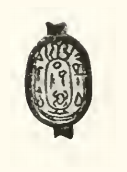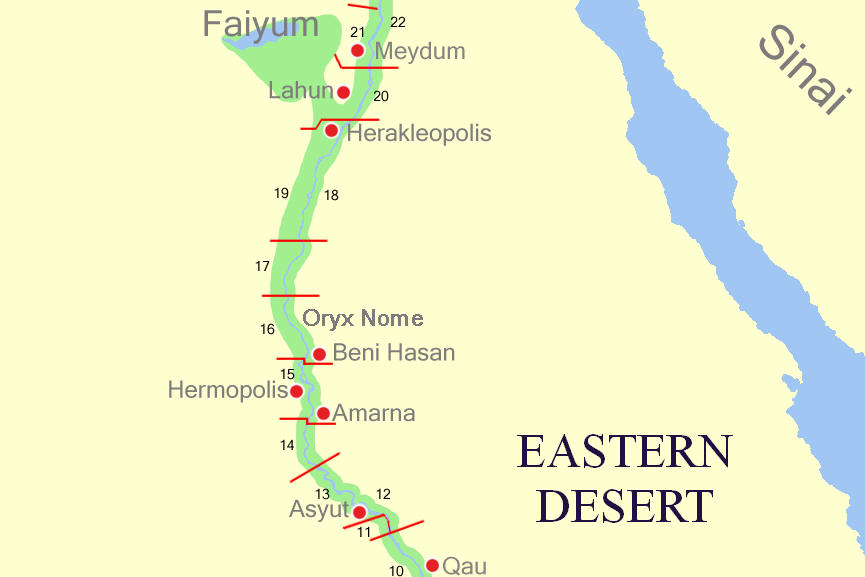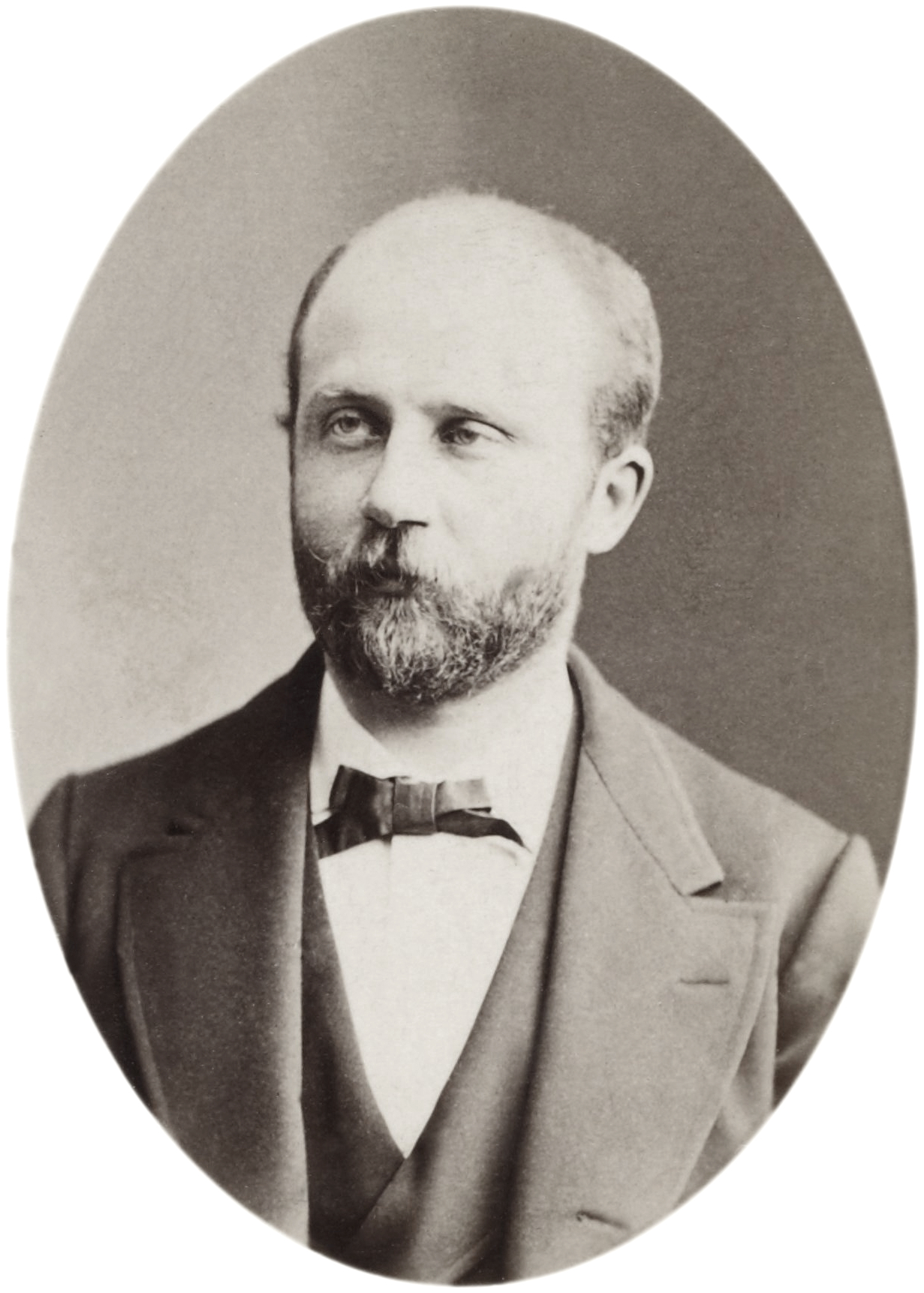|
Nefrusy
Nefrusy was an ancient Egyptian city which location is north of modern day cities of El Ashmunein and El Quseyya. It is known for being the site of Battle of Nefrusy between the forces of Kamose and Hyksos forces, which saw the first attested use of chariots in the history of Military of ancient Egypt. History Nefrusy is first attested in a tomb at Hebenu in the Old Kingdom where Hathor, mistress of Nefrusy is mentioned. In the Middle Kingdom, the place is mentioned several times in the tombs of Beni Hassan where Hathor, lady of Nefrusy is also mentioned. Hetepet, consort of the nomarch Amenemhet was a priestess of Hathor of Nefrusy. Under Teti son of Pepi, Nefrusy is described in the victory stela of Kamose as a 'nest of Asiatics'. Kamose destroyed Nefrusy on his campaign against the Hyksos. Another mayors resided there in the New Kingdom, Iuno, Mahu, Iamunefer, Pahahauti are known by name. Hieroglyphic Descriptor Modern Location Its location has been suggested by G ... [...More Info...] [...Related Items...] OR: [Wikipedia] [Google] [Baidu] |
Kamose
Kamose was the last Pharaoh of the Theban Seventeenth Dynasty. He was possibly the son of Seqenenre Tao and Ahhotep I and the uncle of Ahmose I, founder of the Eighteenth Dynasty. His reign fell at the very end of the Second Intermediate Period. Kamose is usually ascribed a reign of three years (his highest attested regnal year), although some scholars now favor giving him a longer reign of approximately five years. His reign is important for the decisive military initiatives he took against the Hyksos, who had come to rule much of Ancient Egypt. His father had begun the initiatives and lost his life in battle with the Hyksos. It is thought that his mother, as regent, continued the campaigns after the death of Kamose, and that his full brother made the final conquest of them and united all of Egypt. Campaigns ''Casus Belli'' Kamose was the final king in a succession of native Egyptian kings at Thebes. Originally, the Theban Seventeenth dynasty rulers were at peace with the ... [...More Info...] [...Related Items...] OR: [Wikipedia] [Google] [Baidu] |
Hyksos
Hyksos (; Egyptian '' ḥqꜣ(w)- ḫꜣswt'', Egyptological pronunciation: ''hekau khasut'', "ruler(s) of foreign lands") is a term which, in modern Egyptology, designates the kings of the Fifteenth Dynasty of Egypt (fl. c. 1650–1550 BC). The seat of power of these kings was the city of Avaris in the Nile delta, from where they ruled over Lower and Middle Egypt up to Cusae. In the ''Aegyptiaca'', a history of Egypt written by the Greco-Egyptian priest and historian Manetho in the 3rd century BC, the term Hyksos is used ethnically to designate people of probable West Semitic, Levantine origin. While Manetho portrayed the Hyksos as invaders and oppressors, this interpretation is questioned in modern Egyptology. Instead, Hyksos rule might have been preceded by groups of Canaanite peoples who gradually settled in the Nile delta from the end of the Twelfth Dynasty onwards and who may have seceded from the crumbling and unstable Egyptian control at some point during the Thirteent ... [...More Info...] [...Related Items...] OR: [Wikipedia] [Google] [Baidu] |
Minya, Egypt
MinyaAlso spelled '' el...'' or ''al...'' ''...Menia, ...Minia'' or ''...Menya'' ( ar, المنيا ; ) is the capital of the Minya Governorate in Upper Egypt. It is located approximately south of Cairo on the western bank of the Nile River, which flows north through the city. Minya has one of the highest concentration of Coptic Christians in Egypt (approximately 50% of total population). It is the home city of the Minya University, Suzanne Mubarak Center for Arts, the new Minya Museum, and the regional North of Upper Egypt Radio and Television. Etymology The city's Arabic name comes from its Coptic one, rendered in as ⲧⲙⲱⲛⲏ in Bohairic and ⲧⲙⲟⲟⲛⲉ in Sahidic, which in turn comes from . The modern city of Minya is often identified with the Ancient Egyptian settlement of Men'at Khufu based on the resemblance of two names, although this claim, proposed by Gauthier and Drew-Bear, is denied by modern Egyptology as the former has a clear Greek etymology. ... [...More Info...] [...Related Items...] OR: [Wikipedia] [Google] [Baidu] |
New Kingdom
New is an adjective referring to something recently made, discovered, or created. New or NEW may refer to: Music * New, singer of K-pop group The Boyz Albums and EPs * ''New'' (album), by Paul McCartney, 2013 * ''New'' (EP), by Regurgitator, 1995 Songs * "New" (Daya song), 2017 * "New" (Paul McCartney song), 2013 * "New" (No Doubt song), 1999 *"new", by Loona from '' Yves'', 2017 *"The New", by Interpol from ''Turn On the Bright Lights'', 2002 Acronyms * Net economic welfare, a proposed macroeconomic indicator * Net explosive weight, also known as net explosive quantity * Network of enlightened Women, a conservative university women's organization * Next Entertainment World, a South Korean film distribution company Identification codes * Nepal Bhasa language ISO 639 language code * New Century Financial Corporation (NYSE stock abbreviation) * Northeast Wrestling, a professional wrestling promotion in the northeastern United States Transport * New Orleans Lakefront Ai ... [...More Info...] [...Related Items...] OR: [Wikipedia] [Google] [Baidu] |
Lost Ancient Cities And Towns
Lost may refer to getting lost, or to: Geography *Lost, Aberdeenshire, a hamlet in Scotland *Lake Okeechobee Scenic Trail, or LOST, a hiking and cycling trail in Florida, US History *Abbreviation of lost work, any work which is known to have been created but has not survived to the present day Arts, entertainment, and media Films * ''Lost'' (1950 film), a Mexican film directed by Fernando A. Rivero * ''Lost'' (1956 film), a British thriller starring David Farrar * ''Lost'' (1983 film), an American film directed by Al Adamson * ''Lost!'' (film), a 1986 Canadian film directed by Peter Rowe * ''Lost'' (2004 film), an American thriller starring Dean Cain * ''The Lost'' (2006 film), an American psychological horror starring Marc Senter Games *'' Lost: Via Domus'', a 2008 video game by Ubisoft based on the ''Lost'' TV series * ''The Lost'' (video game), a 2002 vaporware game by Irrational Games Literature * ''Lost'' (Maguire novel), a 2001 horror/mystery novel by Gregory Maguire * ' ... [...More Info...] [...Related Items...] OR: [Wikipedia] [Google] [Baidu] |
Cities In Ancient Egypt
A city is a human settlement of notable size.Goodall, B. (1987) ''The Penguin Dictionary of Human Geography''. London: Penguin.Kuper, A. and Kuper, J., eds (1996) ''The Social Science Encyclopedia''. 2nd edition. London: Routledge. It can be defined as a permanent and densely settled place with administratively defined boundaries whose members work primarily on non-agricultural tasks. Cities generally have extensive systems for housing, transportation, sanitation, utilities, land use, production of goods, and communication. Their density facilitates interaction between people, government organisations and businesses, sometimes benefiting different parties in the process, such as improving efficiency of goods and service distribution. Historically, city-dwellers have been a small proportion of humanity overall, but following two centuries of unprecedented and rapid urbanization, more than half of the world population now lives in cities, which has had profound consequences for g ... [...More Info...] [...Related Items...] OR: [Wikipedia] [Google] [Baidu] |
List Of Ancient Egyptian Towns And Cities
This is a list of known ancient Egyptian towns and cities. http://www.ucl.ac.uk/. Retrieved on 2016-03-05. The list is for sites intended for permanent settlement and does not include fortresses and other locations of intermittent habitation. Use Ctrl + F and enter the town's name or alternative name for convenience. Lower Egypt Upper Egypt }) , tȝ mȝy Sbk nb Pay pȝ nṯr ʿȝ , , - , Tepihu ( Aphroditopolis) , , , 22nd , (cult center during Greek period) , , Petpeh[...More Info...] [...Related Items...] OR: [Wikipedia] [Google] [Baidu] |
Abu Qirqas
Abu Qirqas or Abu Qurqas is a subdivision ('' markaz'') of Minya Governorate of Egypt. It is situated on the west bank of the Nile, opposite of the historic site of Beni Hasan. The population of Abu Qirqas is around 400,000 inhabitants. The city has an important sugar factory. Name The name is spelled in . The Late Coptic: , probably from Late Coptic: . Administrative divisions Abu Qirqas comprises eight local administrative units: * Abioha * Abu Qirqas El Balad * Atlidem * Beni Ebeid * Beni Hassan El Shorouk * Beni Moussa * Greis * Nazlet Asmant * gawargy Coptic Catholic Eparchy On 2020.1.7 an Eparchy (Eastern Catholic The Eastern Catholic Churches or Oriental Catholic Churches, also called the Eastern-Rite Catholic Churches, Eastern Rite Catholicism, or simply the Eastern Churches, are 23 Eastern Christian autonomous (''sui iuris'') particular churches of ... Diocese) of Abu Qurqas was established on territory split off from the Minya. Its episcop ... [...More Info...] [...Related Items...] OR: [Wikipedia] [Google] [Baidu] |
Bahr Yussef
The Bahr Yussef ( ar, بحر يوسف; "the waterway of Joseph") is a canal which connects the Nile River with Fayyum in Egypt. In ancient times it was called Tomis () by the Greeks which was derived from its Egyptian name ''Tm.t'' "ending canal" and was still in use after the Arab conquest, translated into Arabic as al-Manhi (). It was also known as "the Great canal" () or "the canal of Moeris". The modern Arabic name refers to the prophet Yusuf, the Quranic counterpart of the Biblical Joseph. In prehistoric times, the canal was a natural offshoot of the Nile which created a lake to the west during high floods. Beginning with the 12th dynasty, the waterway was enlarged and the Fayyum was developed to enlarge Lake Moeris. The canal was built into the natural incline of the valley, creating a channel 15 km long and 5 m deep that sloped into the Fayyum depression. The canal was controlled by the Ha-Uar Dam, which was actually two dams that regulated the flow into the lake ... [...More Info...] [...Related Items...] OR: [Wikipedia] [Google] [Baidu] |
Georges Daressy
Georges Émile Jules Daressy (19 March 1864 – 28 February 1938) was a French Egyptologist. He worked from 1887 in the Egyptian Museum in Cairo. Amongst his responsibilities was the museum's move from Bulaq to Giza in 1891, and then to the present-day location in 1901. He is an author of the general catalog of the museum. He was the first Egyptologist to publish (1901) and translate (1906) the ''Akhmim wooden tablets.'' He excavated throughout Egypt, most notably in the Valley of the Kings, Medinet Habu (temple), Medinet Habu, Karnak, Luxor, Malkata and Abydos, Egypt, Abydos. Publications * , Le Caire, 1893. * , Le Caire, 1897. * , 1898. * , Le Caire : , 1901, (). * , Le Caire : , 1902, (). * , Le Caire : , 1903, (). * , Le Caire : Imprimerie de l'Inst. Franc̜ais d'Archéologie Orientale, 1905, (). * , Le Caire : Imprimerie de l'Inst. Franc̜ais d'Archéologie Orientale, 1905–1906, (). * XXVIII, 1906, 62–72. * , Le Caire : , 1909, (). * ''The tomb of queen Tîyi : Catalogue ... [...More Info...] [...Related Items...] OR: [Wikipedia] [Google] [Baidu] |
Gaston Maspero
Sir Gaston Camille Charles Maspero (23 June 1846 – 30 June 1916) was a French Egyptologist known for popularizing the term "Sea Peoples" in an 1881 paper. Maspero's son, Henri Maspero, became a notable sinologist and scholar of East Asia. Early life Gaston Maspero was born in Paris in 1846 to Adela Evelina Maspero, born in Milan in 1822, daughter of a Milanese printer, and of an unnamed father, but identified by family tradition with Camillo Marsuzi de Aguirre, Italian revolutionary on the run. He was educated at the Lycee Louis-le-Grand, Jesuit boarding school and university at the ''École normale''. While at school he showed a special taste for history and became interested in Egypt following a visit to the Egyptian galleries of the Louvre at the age of fourteen. At university he excelled in Sanskrit as well as hieroglyphics. It was while Maspero was in final year at the ''École normale'' in 1867 that friends mentioned his skills at reading hieroglyphics to Egyptologi ... [...More Info...] [...Related Items...] OR: [Wikipedia] [Google] [Baidu] |





